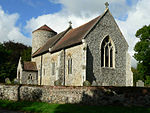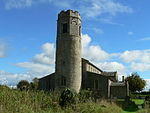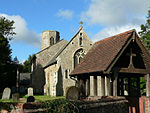Shotesham-Woodton Hornbeam Woods
ShoteshamSites of Special Scientific Interest in Norfolk

Shotesham-Woodton Hornbeam Woods is a 40.4-hectare (100-acre) biological Site of Special Scientific Interest east of Newton Flotman in Norfolk.This site comprises four ancient coppices with standard hornbeam woods on boulder clay: Shotesham Little Wood, Saxlingham Grove, Hempnall Little Wood, and Winter's Grove. The ground flora is rich with several uncommon species, such as herb Paris, stinking iris, and greater butterfly orchid.The woods are private, with no public access.
Excerpt from the Wikipedia article Shotesham-Woodton Hornbeam Woods (License: CC BY-SA 3.0, Authors, Images).Shotesham-Woodton Hornbeam Woods
The Green, South Norfolk Saxlingham Nethergate
Geographical coordinates (GPS) Address Nearby Places Show on map
Geographical coordinates (GPS)
| Latitude | Longitude |
|---|---|
| N 52.516 ° | E 1.324 ° |
Address
The Green
The Green
NR15 1TH South Norfolk, Saxlingham Nethergate
England, United Kingdom
Open on Google Maps











